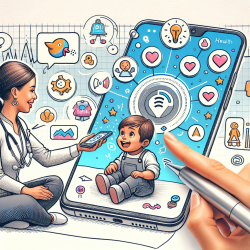Understanding Trauma Reactivation Therapy for Children
As a speech-language pathologist, you are dedicated to fostering positive outcomes for children. One area that demands our attention is the treatment of post-traumatic stress disorder (PTSD) in young patients, especially those affected by war and displacement. Recent research offers promising insights into a novel therapeutic approach that could be a game-changer for practitioners like you.
The Study: Trauma Reactivation Under Propranolol
A study titled "Trauma reactivation under propranolol among traumatized Syrian refugee children: preliminary evidence regarding efficacy" explores the potential of a new treatment method. Conducted in a Syrian refugee camp, the research involved 117 children suffering from enduring PTSD symptoms. The therapy involved administering propranolol, a reconsolidation blocker, 90 minutes before the children briefly recalled a traumatic memory over five consecutive days.
Key Findings
- PTSD Symptoms Reduction: The study reported a significant reduction in PTSD symptoms, with a 64% decrease observed at the 13-week follow-up.
- Depressive Symptoms Improvement: There was a 39% reduction in depressive symptoms, indicating the therapy's broader impact on mental health.
- Anxiety Symptoms: While anxiety symptoms initially improved, they returned to baseline levels, likely due to the challenging living conditions in the camp.
Implications for Practitioners
This study highlights the potential of reconsolidation therapy as a safe and effective treatment strategy for children with PTSD. As a practitioner, you can consider integrating this approach into your practice, especially for children who have experienced trauma. The therapy's simplicity and cost-effectiveness make it an attractive option, even in resource-limited settings.
Encouraging Further Research
While the results are promising, the study's authors emphasize the need for replication studies using stronger designs. As a practitioner, you can contribute to this growing body of research by exploring the therapy's efficacy in different contexts and populations. Collaborating with researchers and participating in clinical trials can help refine and validate this approach.
Conclusion
The trauma reactivation therapy under propranolol offers a beacon of hope for children suffering from PTSD. By staying informed and engaged with the latest research, you can enhance your skills and provide better care for your young clients. To read the original research paper, please follow this link: Trauma reactivation under propranolol among traumatized Syrian refugee children: preliminary evidence regarding efficacy.










